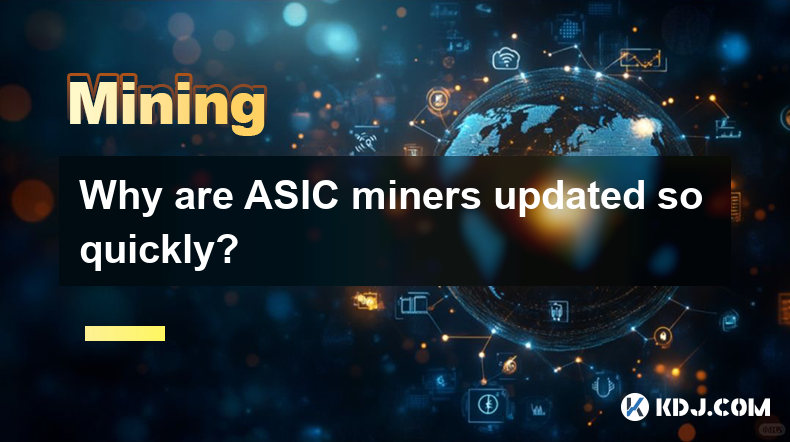-
 Bitcoin
Bitcoin $83,877.1483
-2.32% -
 Ethereum
Ethereum $1,580.2280
-3.79% -
 Tether USDt
Tether USDt $0.9999
0.01% -
 XRP
XRP $2.0721
-3.70% -
 BNB
BNB $580.5381
-1.38% -
 Solana
Solana $125.3784
-4.85% -
 USDC
USDC $1.0000
0.01% -
 TRON
TRON $0.2534
0.77% -
 Dogecoin
Dogecoin $0.1539
-3.73% -
 Cardano
Cardano $0.6098
-5.48% -
 UNUS SED LEO
UNUS SED LEO $9.3966
-0.35% -
 Chainlink
Chainlink $12.2635
-3.41% -
 Avalanche
Avalanche $18.9039
-5.31% -
 Stellar
Stellar $0.2347
-2.67% -
 Toncoin
Toncoin $2.8692
-3.67% -
 Shiba Inu
Shiba Inu $0.0...01165
-2.69% -
 Sui
Sui $2.0967
-4.89% -
 Hedera
Hedera $0.1580
-5.07% -
 Bitcoin Cash
Bitcoin Cash $322.5592
-3.37% -
 Litecoin
Litecoin $76.0764
-2.46% -
 Polkadot
Polkadot $3.5464
-4.03% -
 Dai
Dai $1.0002
0.02% -
 Bitget Token
Bitget Token $4.2676
-1.86% -
 Hyperliquid
Hyperliquid $15.0668
-8.19% -
 Ethena USDe
Ethena USDe $0.9992
0.01% -
 Pi
Pi $0.6164
-16.96% -
 Monero
Monero $219.0365
3.06% -
 Uniswap
Uniswap $5.1848
-3.95% -
 OKB
OKB $52.3728
0.37% -
 Pepe
Pepe $0.0...07093
-4.62%
What is hashrate fluctuation?
Hashrate fluctuation impacts blockchain security, block times, and mining profitability, influenced by mining difficulty, market conditions, tech advancements, and regulatory changes.
Apr 08, 2025 at 08:08 pm

Hashrate fluctuation refers to the changes in the total computational power used by miners to process transactions and secure the blockchain network. This metric is crucial in the cryptocurrency world, particularly for networks like Bitcoin, Ethereum, and others that rely on proof-of-work (PoW) consensus mechanisms. Understanding hashrate fluctuation is essential for miners, investors, and enthusiasts as it directly impacts the security, profitability, and overall health of a blockchain network.
What Causes Hashrate Fluctuation?
Hashrate fluctuation can be attributed to several factors. One primary cause is the change in mining difficulty. Mining difficulty adjusts periodically to maintain a consistent block time, and when it increases, miners may find it less profitable to continue mining, leading to a decrease in hashrate. Conversely, a decrease in difficulty can attract more miners, boosting the hashrate.
Another significant factor is market conditions. When the price of a cryptocurrency rises, mining becomes more profitable, encouraging more miners to join the network, which increases the hashrate. Conversely, a drop in price can lead to miners shutting down their operations, causing the hashrate to fall.
Technological advancements also play a role. The introduction of more efficient mining hardware can lead to an increase in hashrate as miners upgrade their equipment. However, older, less efficient machines may be retired, contributing to fluctuations.
Regulatory changes and energy costs are additional factors. Governments may impose restrictions on mining activities, affecting the hashrate. Similarly, fluctuations in electricity prices can impact miners' operational costs, influencing their decision to continue or halt mining operations.
How Does Hashrate Fluctuation Impact the Network?
Hashrate fluctuation has several implications for a blockchain network. Firstly, it affects network security. A higher hashrate means more computational power is dedicated to securing the network, making it more resistant to attacks like 51% attacks. Conversely, a lower hashrate can make the network more vulnerable.
Secondly, hashrate fluctuation impacts block time. A higher hashrate can lead to faster block times, while a lower hashrate can result in slower block times. This can affect the overall transaction processing speed of the network.
Mining profitability is also influenced by hashrate fluctuations. When the hashrate increases, the competition among miners intensifies, potentially reducing individual miners' rewards. Conversely, a decrease in hashrate can lead to higher rewards for remaining miners.
Lastly, hashrate fluctuation can serve as an indicator of the network's health and miner confidence. A stable or growing hashrate suggests a healthy and confident mining community, while significant fluctuations may indicate underlying issues or market uncertainty.
How to Monitor Hashrate Fluctuation?
Monitoring hashrate fluctuation is crucial for anyone involved in the cryptocurrency space. Here are some steps to effectively track hashrate changes:
Use Blockchain Explorers: Websites like Blockchain.com or Etherscan provide real-time data on hashrate for various cryptocurrencies. These platforms offer charts and historical data, allowing users to analyze trends over time.
Subscribe to Mining Pools: Many mining pools, such as Slush Pool or F2Pool, offer detailed statistics on their hashrate. By joining or following these pools, users can get insights into the hashrate of specific networks.
Utilize Cryptocurrency Analytics Platforms: Services like Coinwarz or CryptoCompare provide comprehensive data on hashrate, mining difficulty, and other relevant metrics. These platforms often include tools for comparing different cryptocurrencies and analyzing their performance.
Follow Industry News: Staying updated with news from reputable sources like CoinDesk or CryptoSlate can provide context for hashrate fluctuations. News about regulatory changes, technological advancements, or market trends can help explain sudden shifts in hashrate.
Strategies to Mitigate the Impact of Hashrate Fluctuation
For miners and investors, mitigating the impact of hashrate fluctuation is essential. Here are some strategies to consider:
Diversify Mining Operations: By mining multiple cryptocurrencies, miners can spread their risk. If the hashrate of one network drops, they can shift their focus to another, more profitable network.
Invest in Efficient Hardware: Upgrading to the latest mining hardware can help miners stay competitive even during periods of high hashrate. Efficient machines can offset the impact of increased competition.
Monitor and Adjust: Regularly monitoring hashrate and other network metrics allows miners to make informed decisions. If the hashrate is trending downwards, miners might consider reducing their operations temporarily to avoid losses.
Join Mining Pools: Participating in mining pools can provide a more stable income stream. Pools distribute rewards more evenly among participants, reducing the impact of hashrate fluctuations on individual miners.
Case Studies of Hashrate Fluctuation
Examining real-world examples can provide deeper insights into hashrate fluctuation. One notable case is the Bitcoin hashrate drop in 2021. Following China's crackdown on cryptocurrency mining, the Bitcoin hashrate plummeted as many miners were forced to shut down their operations. This led to a temporary increase in block times and a decrease in network security. However, as miners relocated to more crypto-friendly regions, the hashrate eventually recovered, demonstrating the resilience of the network.
Another example is the Ethereum hashrate surge in 2020. As Ethereum's price soared, more miners joined the network, leading to a significant increase in hashrate. This surge contributed to faster block times and enhanced network security, showcasing the positive impact of increased mining activity.
Frequently Asked Questions
Q: How does hashrate fluctuation affect the price of a cryptocurrency?
A: Hashrate fluctuation can indirectly influence the price of a cryptocurrency. A higher hashrate often indicates increased miner confidence and network security, which can positively impact the price. Conversely, a significant drop in hashrate might signal potential issues, leading to a decrease in price. However, many other factors, such as market sentiment and macroeconomic conditions, also play a role in price movements.
Q: Can hashrate fluctuation be predicted?
A: While it's challenging to predict hashrate fluctuation with high accuracy, certain indicators can provide insights. Monitoring mining difficulty, cryptocurrency prices, and regulatory news can help anticipate potential changes in hashrate. Additionally, historical data and trend analysis can offer clues about future fluctuations.
Q: How does hashrate fluctuation impact smaller cryptocurrencies?
A: Smaller cryptocurrencies can be more vulnerable to hashrate fluctuations due to their lower overall hashrate and fewer miners. A significant drop in hashrate can lead to slower block times and increased susceptibility to attacks. Conversely, a surge in hashrate can enhance the network's security and efficiency, but it may also lead to higher mining difficulty, affecting miners' profitability.
Q: What role do mining pools play in hashrate fluctuation?
A: Mining pools can help stabilize hashrate by distributing the workload among many miners. When individual miners face challenges, such as increased difficulty or higher energy costs, pools can continue to operate efficiently, mitigating the impact of hashrate fluctuations. However, if a large pool experiences issues, it can still lead to significant hashrate changes for the network.
Disclaimer:info@kdj.com
The information provided is not trading advice. kdj.com does not assume any responsibility for any investments made based on the information provided in this article. Cryptocurrencies are highly volatile and it is highly recommended that you invest with caution after thorough research!
If you believe that the content used on this website infringes your copyright, please contact us immediately (info@kdj.com) and we will delete it promptly.
- MEDIA took a nosedive today, dropping over 60% after Coinbase officially delisted the token
- 2025-04-16 16:25:14
- Movement Labs Investigates Market Maker Issues Following Binance Delisting of MOVE Token Partner
- 2025-04-16 16:25:14
- List Of 5 No KYC Online Casinos Of 2025 - Latest Bonuses!
- 2025-04-16 16:20:15
- Trump Family Has Poured Over $1 Billion into Cryptocurrency Projects
- 2025-04-16 16:20:15
- Could Bitcoin Be Your Safe Harbor Amid Global Market Uncertainty?
- 2025-04-16 16:20:13
- Wolf Game 2.0 on Solana Promises New Mechanics, But Backlash From Community Results in Cancelled Relaunch
- 2025-04-16 16:20:13
Related knowledge

Why does mining require high computing power?
Apr 16,2025 at 12:07pm
Mining in the cryptocurrency world, particularly in the case of Bitcoin and other Proof of Work (PoW) cryptocurrencies, is a process that demands significant computational resources. This article delves into the reasons behind this high demand for computing power, exploring the technical intricacies and the underlying principles that necessitate such re...

Why are ASIC miners updated so quickly?
Apr 16,2025 at 01:07pm
The rapid updates of ASIC miners in the cryptocurrency industry are driven by several key factors that contribute to their constant evolution and improvement. ASIC miners, or Application-Specific Integrated Circuit miners, are specialized hardware designed to mine specific cryptocurrencies with high efficiency. The primary reason for their frequent upda...

How to reduce the electricity cost of mining?
Apr 16,2025 at 08:42am
Mining cryptocurrencies, particularly Bitcoin, is an energy-intensive process that can lead to significant electricity costs. However, there are several strategies that miners can employ to reduce these expenses and make their operations more cost-effective. In this article, we will explore various methods to minimize the electricity cost of mining. Cho...

What is the difference between cloud mining and physical mining?
Apr 16,2025 at 01:49am
What is the difference between cloud mining and physical mining? In the world of cryptocurrencies, mining is the process by which new coins are generated and transactions are verified and added to the blockchain. There are two primary methods of mining: cloud mining and physical mining. Understanding the differences between these two approaches can help...

What does mining difficulty adjustment mean?
Apr 16,2025 at 12:42am
What does mining difficulty adjustment mean? Mining difficulty adjustment is a crucial mechanism in blockchain networks, particularly in Proof of Work (PoW) systems like Bitcoin. It ensures that the rate at which new blocks are added to the blockchain remains consistent, despite fluctuations in the total computational power (hash rate) of the network. T...

How to choose a suitable cryptocurrency for mining?
Apr 16,2025 at 10:15am
Choosing a suitable cryptocurrency for mining involves several considerations that can impact your profitability and efficiency. Mining cryptocurrencies can be a rewarding venture, but it requires careful planning and research. In this article, we will explore the key factors to consider when selecting a cryptocurrency for mining, ensuring you make an i...

Why does mining require high computing power?
Apr 16,2025 at 12:07pm
Mining in the cryptocurrency world, particularly in the case of Bitcoin and other Proof of Work (PoW) cryptocurrencies, is a process that demands significant computational resources. This article delves into the reasons behind this high demand for computing power, exploring the technical intricacies and the underlying principles that necessitate such re...

Why are ASIC miners updated so quickly?
Apr 16,2025 at 01:07pm
The rapid updates of ASIC miners in the cryptocurrency industry are driven by several key factors that contribute to their constant evolution and improvement. ASIC miners, or Application-Specific Integrated Circuit miners, are specialized hardware designed to mine specific cryptocurrencies with high efficiency. The primary reason for their frequent upda...

How to reduce the electricity cost of mining?
Apr 16,2025 at 08:42am
Mining cryptocurrencies, particularly Bitcoin, is an energy-intensive process that can lead to significant electricity costs. However, there are several strategies that miners can employ to reduce these expenses and make their operations more cost-effective. In this article, we will explore various methods to minimize the electricity cost of mining. Cho...

What is the difference between cloud mining and physical mining?
Apr 16,2025 at 01:49am
What is the difference between cloud mining and physical mining? In the world of cryptocurrencies, mining is the process by which new coins are generated and transactions are verified and added to the blockchain. There are two primary methods of mining: cloud mining and physical mining. Understanding the differences between these two approaches can help...

What does mining difficulty adjustment mean?
Apr 16,2025 at 12:42am
What does mining difficulty adjustment mean? Mining difficulty adjustment is a crucial mechanism in blockchain networks, particularly in Proof of Work (PoW) systems like Bitcoin. It ensures that the rate at which new blocks are added to the blockchain remains consistent, despite fluctuations in the total computational power (hash rate) of the network. T...

How to choose a suitable cryptocurrency for mining?
Apr 16,2025 at 10:15am
Choosing a suitable cryptocurrency for mining involves several considerations that can impact your profitability and efficiency. Mining cryptocurrencies can be a rewarding venture, but it requires careful planning and research. In this article, we will explore the key factors to consider when selecting a cryptocurrency for mining, ensuring you make an i...
See all articles























































































